No, the E-Ray isn’t the first Corvette with all-wheel drive
Search for “all-wheel-drive Corvette” and you’ll get pages and pages of results pointing to the new, hybrid C8 Corvette E-Ray, which has an electric motor powering the front wheels in addition to the V-8 combustion engine driving the rears. You might also find any one of a number of C3 Vette bodies mounted, monster truck–style, on 4WD SUV or truck chassis. If you dig deeper, though, you’ll discover that more than 30 years ago, General Motors made a pair of nearly production-ready Corvette concepts with all-wheel drive baked into their designs, and just like the AWD E-Ray, they were also mid-engine cars. Those vehicles would be the 1986 Corvette Indy and 1990 CERV III concepts.
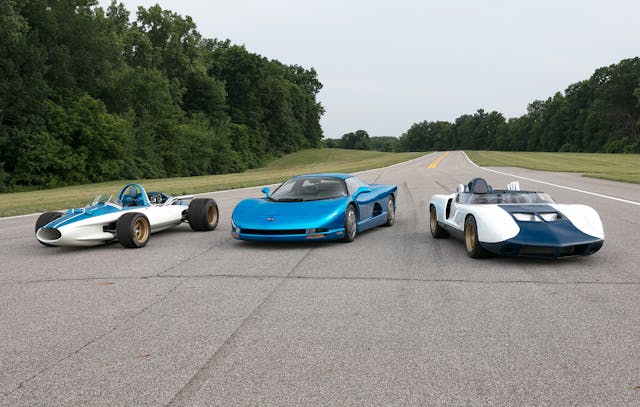
If you’re pedantic, as I am, though, you might quibble with calling them the first all-wheel-drive, mid-engine Corvettes, because another predates them. The CERV III concept was the last of a trio of experimental mid-engine performance cars developed under the direction of Corvette chief engineer Zora Arkus-Duntov. CERV originally stood for Chevrolet Experimental Research Vehicles and was the appellation used for the Corvette team’s forays into mid-engine design, starting with the CERV I in 1962, which was GM’s version of the mid-engine open-wheel racers then starting to dominate Formula One and soon to win at Indianapolis with a Ford-powered Lotus.

CERV I had a conventional rear-wheel-drive layout, but CERV II was not just the first mid-engine car out of the Corvette program with four-wheel drive, it may well have been the first car in general with that layout and drive configuration. The U.S. Patent and Trademark Office certainly thought it was novel, granting Duntov a patent. Perhaps it was too novel. With a torque converter and two-speed Powerglide transmissions at both ends of the longitudinally mounted V-8, I don’t believe any other car, concept or production, has ever had a similar drivetrain.

If the CERV II may look a bit like it could have competed with the Ford GT40, there’s good reason, because that’s exactly what Duntov and Chevrolet general manager Semon “Bunkie” Knudsen had in mind: taking it endurance racing at Sebring and Le Mans. Whether or not Knudsen and Duntov had gotten word of the GT40, the project started in 1962 and was completed in 1964. Larry Shinoda, who drew the 1963 Corvette, and Tony Lapine, later head of styling for Porsche, were responsible for the styling of the body wrapped around the aluminum monocoque. The original plan was to build six of them for a team of three cars, but then the word came down from GM brass to get out of racing, at least publicly.
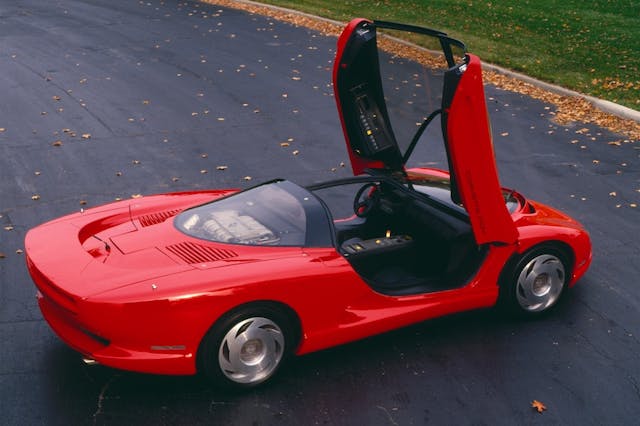
Some of that technology, though, made it out the back door of GM’s Tech Center. If the work of Shinoda and Lapine also makes you think of Jim Hall’s Chaparral racers, the resemblance may not be a mere coincidence. Hall had a close relationship with GM’s skunkworks, which got around corporate rules by testing cars at Hall’s Rattlesnake Raceway near Midland. Midland, Texas, that is, not Midland, Michigan—far from Detroit’s prying eyes. The Chaparral 2A was pretty much a reskinned Grand Sport II, which was developed at the same time as the CERV II, and shared much of its technology. Besides the Chaparral’s aerodynamic wizardry, they were revolutionary for using automatic transmissions, just like the CERV II, only just one per vehicle. Hall is reported to have had seat time in the CERV II during its development.
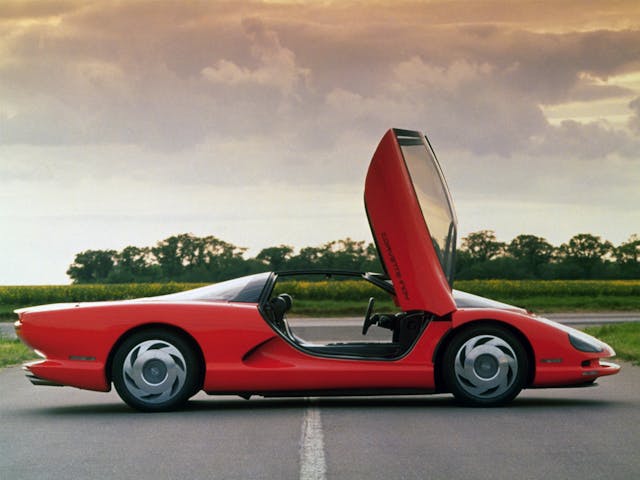
It would be more than two decades before another mid-engine, all-wheel-drive Corvette would make an appearance.

By the mid 1980s, General Motors owned Lotus, and working with Lotus Engineering it developed a 2.6-liter twin-turbo V-8 capable of 600 horsepower. It’s not clear if GM ever intended to go racing with that engine, but 1986 was the same year the production Corvette was chosen to be the pace car at the Indianapolis 500, and that engine was theoretically the basis of a sensual concept called the Corvette Indy. The Indy had all the bells and whistles: a composite monocoque; a long and lean but muscular carbon fiber and Kevlar body designed by Chuck Jordan and Tom Peters; four wheel steering-by-wire; ABS and traction control (remember, this was almost 40 years ago); electronic throttle control; and active suspension. That last was supplied by Lotus in addition to the engine work.
It’s not clear exactly how engineers effected all-wheel drive in a car with a transverse V-8 mounted midship and a transmission aft of the engine. They would have had to route power around the engine or have a second drive off of the flywheel. Remember, though, this is a company that used a chain drive and an oil sump with a hole through it for an axle shaft in the original FWD Cadillac Eldorado. I’m sure they figured out a way to get motive force to the front wheels.

HVAC and infotainment controls were mounted on the scissor doors, which when closed formed the Indy’s panoramic roof. Inside was a center-mounted CRT display with an early navigation system. It took just six weeks for Peters and Jordan to go from drawings to a full-size clay made by Cecomp in Turin. That was a pure show car, which may explain why there were no functional side windows, or much interior space. Reaction to the show car was, however, strong enough that the Corvette team made two more Indys, a fiberglass pushmobile for the show circuit and a functional one used for testing. Instead of a screaming, small-displacement twin-turbo proposed for the concept, the engineering car had the Lotus-designed 32-valve DOHC 5.7-liter V-8 later used in the C4 ZR1, with 380 horsepower. Said to be capable of 180 mph, the working Corvette Indy is in GM’s corporate collection, while the clay mockup is at the National Corvette Museum in Bowling Green, Kentucky.

Although the Corvette Indy was not a practical vehicle, GM seems to have given actual thought to producing its offspring, the CERV III, revealed at the 1990 Detroit auto show. It spiffed up the Indy with a more exotic mix of composite materials, this time including Nomex, and suspension pieces made of titanium. A CRT display was controlled by something that could probably operate a gamepad and there was a cassette-based moving-map nav system, again years before GPS was available for civilian use. Mechanical improvements were two Garret T3 turbos that upped engine output to 650 hp, a three-speed Hydramatic turned into a six-speed, and dual brake discs at each wheel.
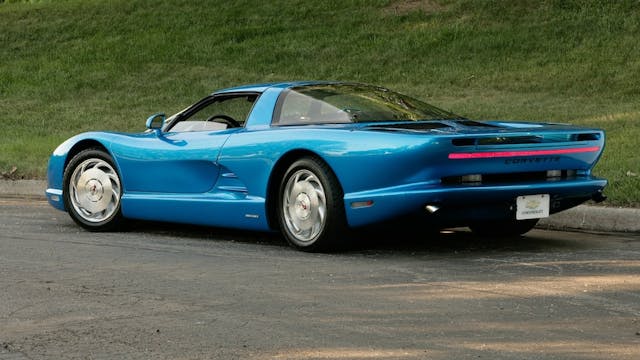
Styling changes also indicate at least some consideration for production. The nose was shorter than the Indy’s and higher off of the ground, to comply with federal bumper height requirements. Side glass was shaped so it could go down and wheel arches provided enough clearance for real world suspension travel. Like the Indy, the CERV III had scissor doors, only with with a conventional roof, whose profile was shared with the production C5 Corvette. Capable of 225 mph, 0–60 mph in under 4 seconds, and able to pull 1.1 g on the skidpad, the CERV III had supercar performance for its day. Two things kept it from production, though. GM executive Mark Reuss said that the early, 1990-era computer-controlled active suspension had too much latency, and GM bean counters said they’d have to charge between $300,000 and $400,000 at a time when a base Corvette coupe was $32K and a ZR1 was $59K. Like CERV I and CERV II, CERV III is in GM’s corporate collection.
It’s conceivable that GM could have made a simpler, less expensive version without all the gizmos, the steering by wire, four-wheel steering, trick brakes, expensive four-cam aluminum engine, etc. And the world would have seen a mid-engine corvette decades before the C8. By then, however, GM managers decided to go with the legacy front-engine layout and instead make incremental improvements in the C5 Corvette.
***
Check out the Hagerty Media homepage so you don’t miss a single story, or better yet, bookmark it. To get our best stories delivered right to your inbox, subscribe to our newsletters.















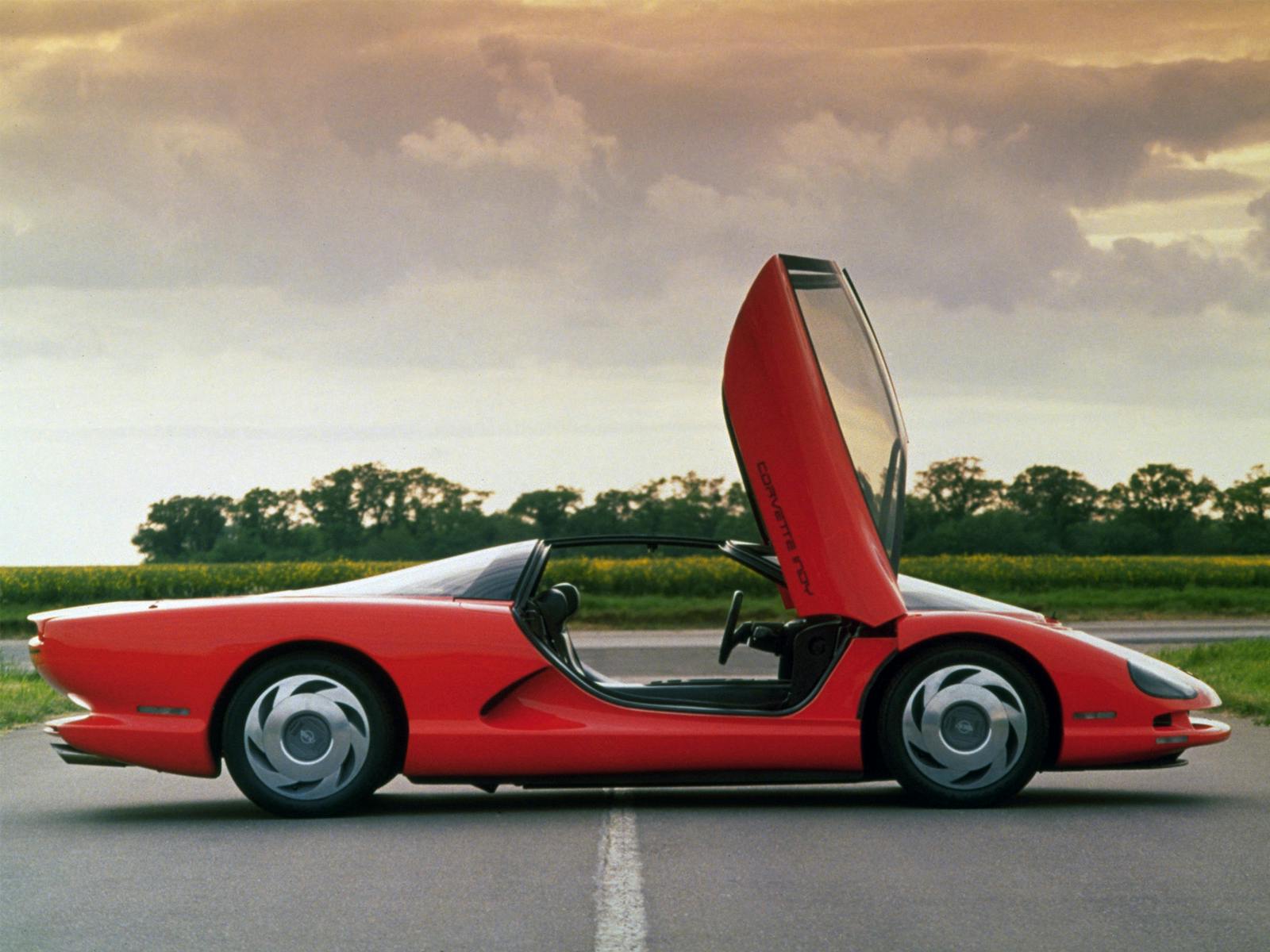




Zora had a long time dream for AWD.
What does it matter? Not a production car.
“Ah, but a man’s reach should exceed his grasp,
Or what’s a heaven for?”
“Heaven is for people who can’t handle the truth.”
Exactly. Not a real Corvette, just an idea for a Corvette. So the E-ray really is the first AWD Corvette, ever.
Interesting, as a SCCA volunteer I stood next to this car on Pre-Grid this years Rolex Reunion ( noon Wed Parade laps ) I had no ideal of the 4 wheel drive. Thanks for the add insights and details.
Counting concept cars into the “first” mix isn’t fair since it was never production. Having said that seeing the Indy with the ZR1 motor is very cool but the CERV III was such a good looking car. I wish it had happened in a production sense with a variant of the ZR1 motor.
Just two of the many mid-engine Vette prototypes built over the years; one even with a Wankel engine!
Chevy teased us with the Corvette mid-engine fantasy for many years; nice to see it finally happen in my lifetime. I think Zora would approve.